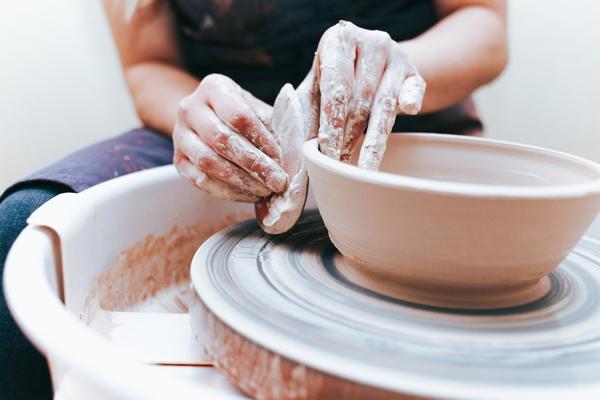![]()
So, you finally decided that you want to learn pottery. You’ve searched around for a few places that teach it and came across some surprising results; some of them offer one option (potters wheel), while the others only teach the other (hand-building methods). A little bit confused, you decided on asking around what they think about this but got even more confused with the response you got.
After this, your curiosity grew so much that you ended up in some pottery forums and found out that there are many different ways of throwing a piece of clay on a spinning wheel to make it into a pot or vase. You also figured out that most people won’t tell you what’s the “best” way of doing things and just tell you to learn and practice whatever they did, making this information even more confusing than it already is. It’s recommended to go to the professionals like terra and ember to take pottery classes.
However, we have covered some differences and advantages of the two methods of building potters. Such as building with potters wheel and hand-building method.
So we’d like to start this article by letting you know what the Potters wheel is and how it works.
What is a potters wheel?
A pottery wheel or a potter’s wheel, as they’re also called, is used for shaping wet clay into pots and other items with a circular base. The potter uses his/her hands to form the clay into the desired shape.
The first pottery wheels were invented around 6000 B.C. and since then, they have evolved through many stages until the current ones that are spinning at high speeds of up to 150 RPM (revolutions per minute).
There are two main types of potter’s wheel that are used in pottery studios – the kick wheel and the floor standing wheel, with many different types of each.
How does a potter’s wheel work?
As we mentioned before, there are two main types of wheels out there, but before you rush off to look for them in any studio near you, make sure you know how they work first.
The kicker wheel spins with the help of a foot pedal that you step on to strike against the internal flywheel. This method is also called kick wheel because it uses your leg strength to spin the clay for shaping. The floor standing-wheel or shaft-driven wheel requires an external motor used to turn its spindle at very high speeds.
So, the main difference between the two types of wheels is that one is powered by your feet while the other is powered by electricity. This implies that both require some kind of force to work efficiently and get the job done.
Now that you know all about potter’s wheel-how does it apply when you’re making vases and pots?
Using the potter’s wheel for vases and pots:
The throwing way of shaping a pot is done on a spinning clay disk after centering it properly. This will make it easier to shape as the potter can apply even pressure all around without having to worry about losing control of the piece or getting his/her hand-cut by a flying shard of clay.
You can get your piece’s base to be perfectly even and circular which is something that you wouldn’t get with hand-building methods if the pot wasn’t thrown on the wheel.
After centering the clay, it has to be flattened out using a rib until it’s 1 inch thick all around. This way it will be easier to get the desired shape of your vase or pot without getting any breaks and ridges on its surface.
The next step is to work with the outside walls of the piece and pull them outward while spinning it at a high speed using your hands, making sure that you don’t lose control over the clay and get it spinning wildly out of control.
You’ll apply the same process until you’ve formed the vessel’s body and then move on to form the rest of its shape, giving your vase or pot a beautiful form that would be impossible to achieve with hand-building methods. Time and effort will pay off when you’re able to turn some of your most difficult ideas into reality.
Working with the potter’s wheel for making complex vessels:
Using the potter’s wheel to make a wonderful, complicated vessel is more efficient than using hand-building methods because when you’re working on a spinning clay disk at high speeds, you can easily control it with no side effects (such as losing control of the clay and getting it to behave in ways that you didn’t intend for).
Hand-building methods would only exaggerate these kinds of problems making your finished product look unprofessional.
Potters wheel vs hand-building methods: Advantages
It’s evident by now, after reading both parts of this article, that throwing pottery on the wheel is the best way to go. However, there are other advantages too.
It’s much easier to teach someone how to use a potter’s wheel than it is to teach them hand-building methods because you can easily demonstrate the different techniques and tricks involved in using one.
There are fewer places for error when shaping a vessel on the wheel as opposed to using hand-building methods. It makes mistakes look less obvious and amateurish because it perfectly shapes your piece every time you use it – something that can’t be said about hand-building techniques.
